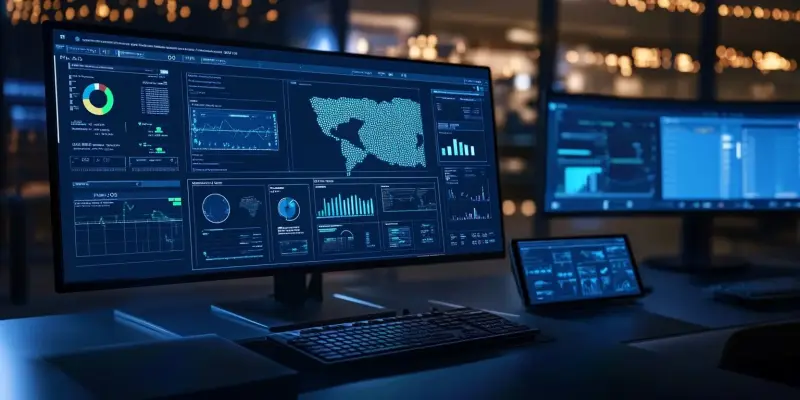In the rapidly evolving world of cybersecurity, maintaining the integrity and confidentiality of systems is paramount, especially given the constant threats posed by malicious attackers. Palo Alto Networks has recently addressed critical vulnerabilities within their PAN-OS software, releasing a series of patches designed to secure their systems against potential exploitation. These updates primarily target a high-severity vulnerability identified as CVE-2025-0108, which has the potential to be exploited by unauthenticated attackers with network access. Additionally, two other significant vulnerabilities were patched, reinforcing the necessity of swift and comprehensive security measures in the tech industry.
Addressing High-Severity Vulnerability CVE-2025-0108
The Nature of the Vulnerability
The CVE-2025-0108 vulnerability stands out due to its severity, scoring 7.8 out of 10 on the CVSS scale. The vulnerability allows unauthenticated attackers with network access to bypass authentication on the management web interface of PAN-OS, posing a significant security risk. The root of the problem lies in the discrepancy in handling incoming requests by the software’s Nginx and Apache components, leading to a directory traversal attack. This type of attack can enable malicious actors to gain unauthorized access to sensitive directories and files, significantly escalating the threat level. Such a vulnerability underscores the importance of meticulous software design and prompt patching in the face of security flaws.
Impact and Resolution
The affected software versions include PAN-OS 11.2 < 11.2.4-h4, PAN-OS 11.1 < 11.1.6-#, PAN-OS 11.0, PAN-OS 10.2 < 10.2.13-###, and PAN-OS 10.1 < 10.1.14-h9. Recognizing the potential danger, Palo Alto Networks has issued fixes in subsequent updates for these versions. The company’s swift response highlights the dynamic and proactive nature of cybersecurity practices, ensuring that vulnerabilities are addressed before they can be widely exploited. System administrators are urged to apply these updates immediately to safeguard their networks against potential attacks, maintaining the confidentiality and integrity of their systems.
Patching Additional Vulnerabilities
CVE-2025-0109 – File Deletion Flaw
The second significant vulnerability addressed is CVE-2025-0109, which carries a CVSS score of 5.5, indicating a moderate risk level. This particular flaw is a file deletion vulnerability that allows attackers to delete specific files as the “nobody” user. Although not as critical as CVE-2025-0108, this vulnerability still poses a risk for data integrity and normal system operations. By gaining the ability to delete files, an attacker could disrupt essential services or remove critical system files, leading to potential downtime and loss of data integrity. Palo Alto Networks has included fixes for this flaw in the same updates as those for CVE-2025-0108, demonstrating their commitment to comprehensive security.
CVE-2025-0110 – Command Injection Vulnerability
The third vulnerability, CVE-2025-0110, scores a 7.3 on the CVSS scale and involves a command injection vulnerability in the PAN-OS OpenConfig plugin. This flaw can be exploited by authenticated administrators to run arbitrary commands, potentially leading to complete system compromise. While this requires higher-level access to exploit, it still represents a significant security risk, particularly in environments where administrator accounts could be compromised. To mitigate these risks, Palo Alto Networks has advised administrators to disable or uninstall the OpenConfig plugin if it is not in use. Proactive measures like these are crucial in reducing the potential attack surface and protecting against unforeseen vulnerabilities.
General Recommendations and Implications
Mitigation Strategies
In addition to applying the patches, Palo Alto Networks recommends further steps to mitigate the risks associated with the identified vulnerabilities. One key strategy is to disable access to the management interface from untrusted networks. This measure reduces the likelihood of unauthorized access attempts, adding a layer of security to the system. Furthermore, for those not utilizing the OpenConfig plugin, disabling or uninstalling it is advised to prevent potential exploitation. These recommendations reflect the broader cybersecurity practice of minimizing attack surfaces, ensuring only necessary services and interfaces are accessible.
Global Impact of Exploitation
The exploitation of CVE-2025-0108 has already been reported, with malicious activities detected originating from IP addresses in the United States, China, and Israel. Such widespread exploitation demonstrates the global nature of cybersecurity threats and the importance of international collaboration in addressing them. It also highlights the necessity for organizations worldwide to remain vigilant and proactive in their security measures. By promptly addressing and mitigating vulnerabilities, companies can better protect their systems and data from the ever-evolving threat landscape.
Conclusion and Future Considerations
In the continually advancing field of cybersecurity, ensuring the integrity and confidentiality of systems is critical, especially with the persistent threats from malicious entities. Palo Alto Networks recently addressed several critical vulnerabilities in their PAN-OS software by releasing a series of patches. These updates are crucial for safeguarding their systems against potential exploits. The primary concern addressed was a high-severity vulnerability, designated as CVE-2025-0108, which could be exploited by unauthenticated attackers with network access. Moreover, Palo Alto Networks identified and patched two other significant vulnerabilities. These actions underscore the essential need for swift and comprehensive security measures in the tech industry. With the constant evolution of cyber threats, it’s pivotal for organizations to stay ahead by regularly updating and securing their systems to prevent potential breaches and ensure robust protection against cyber attacks.

